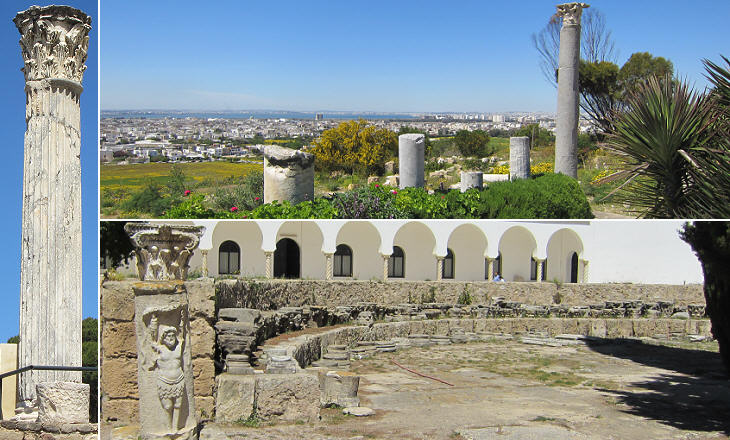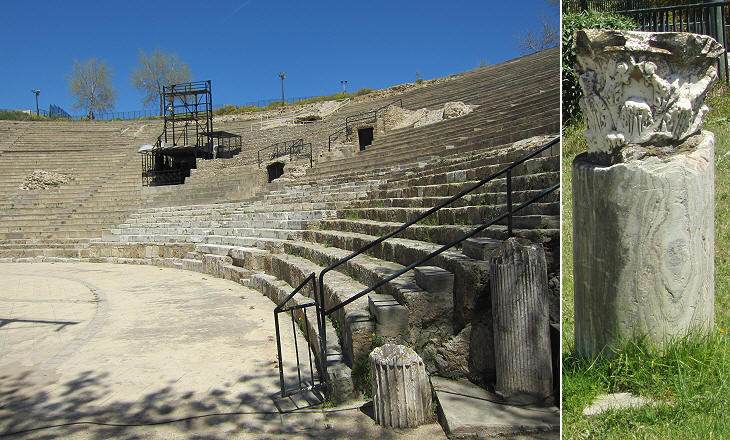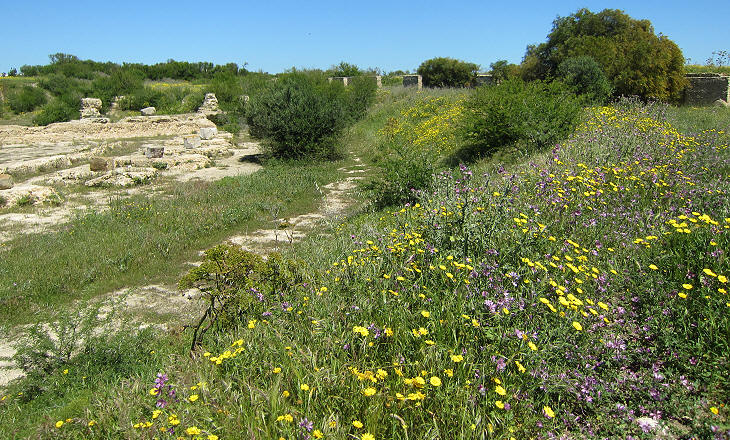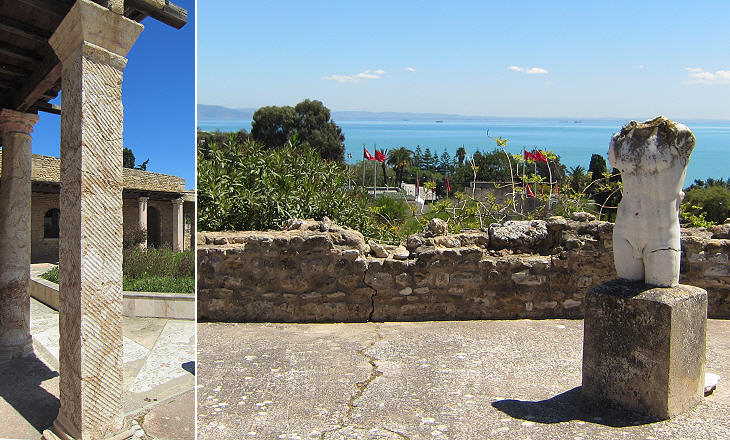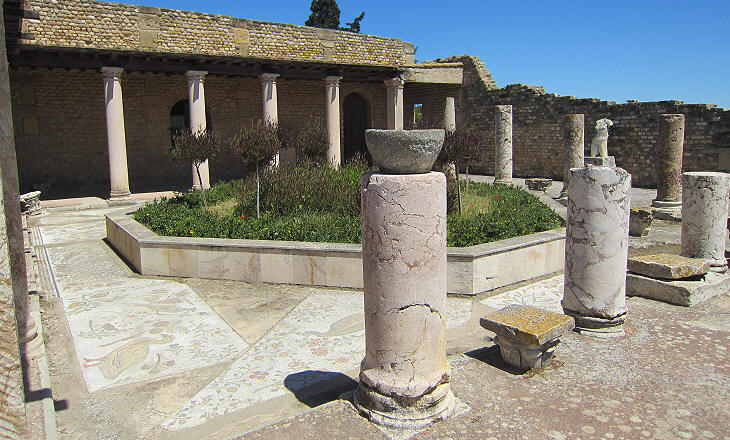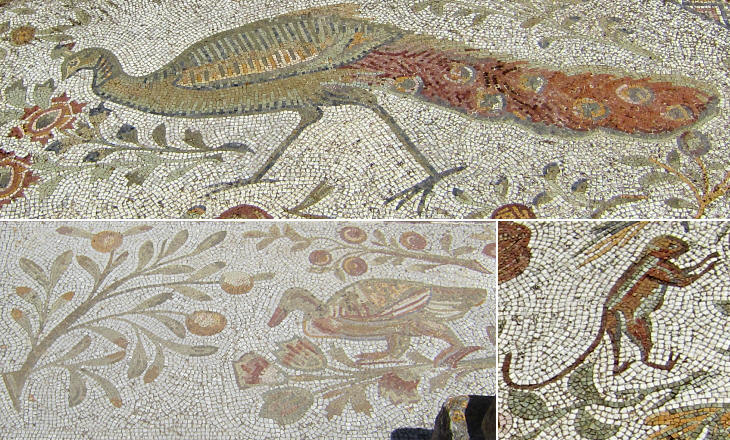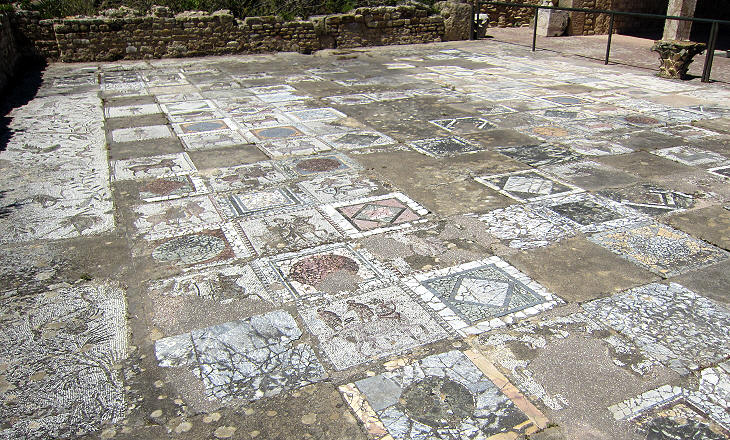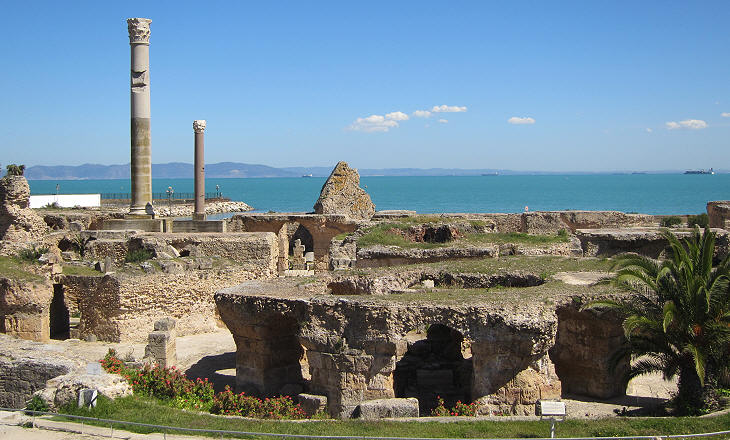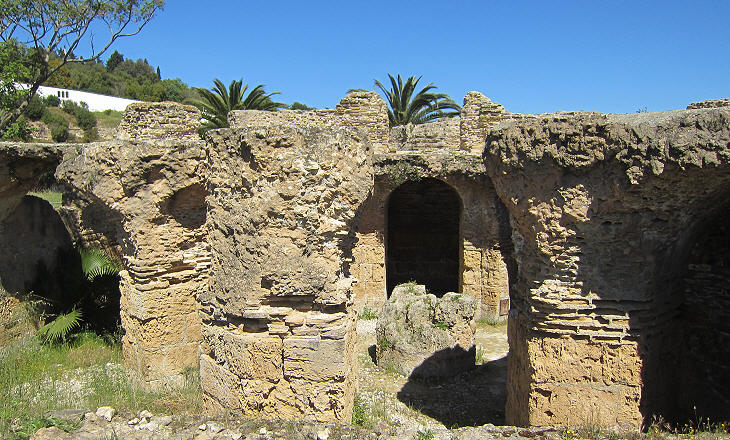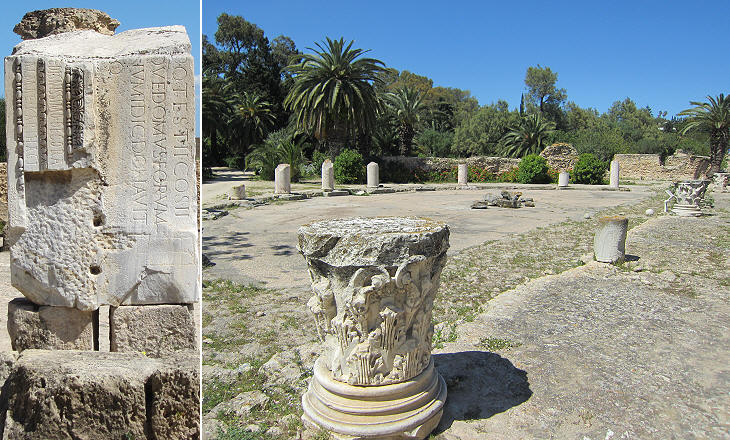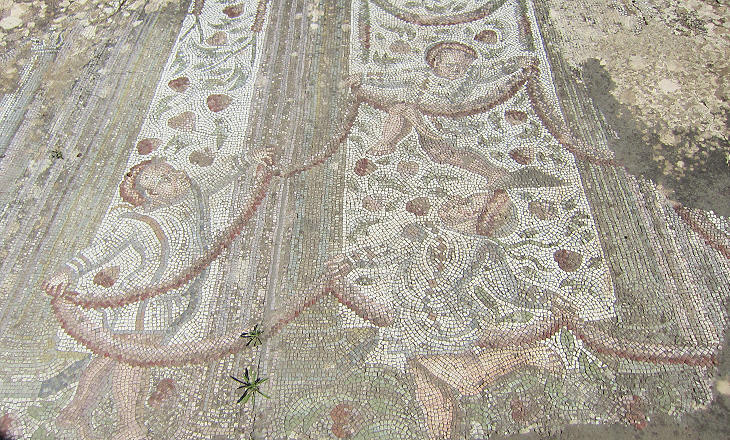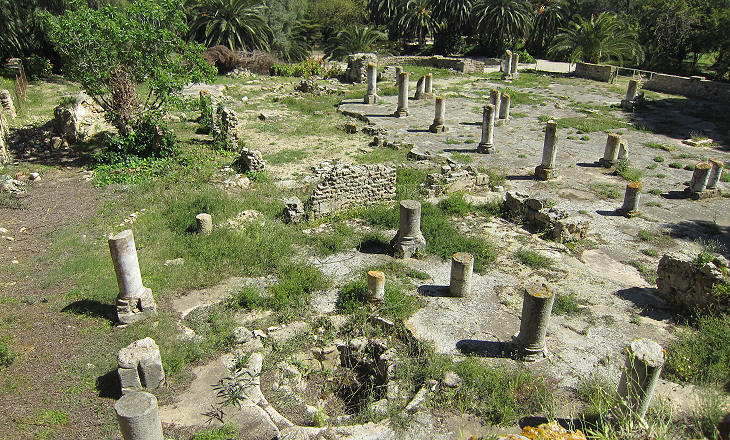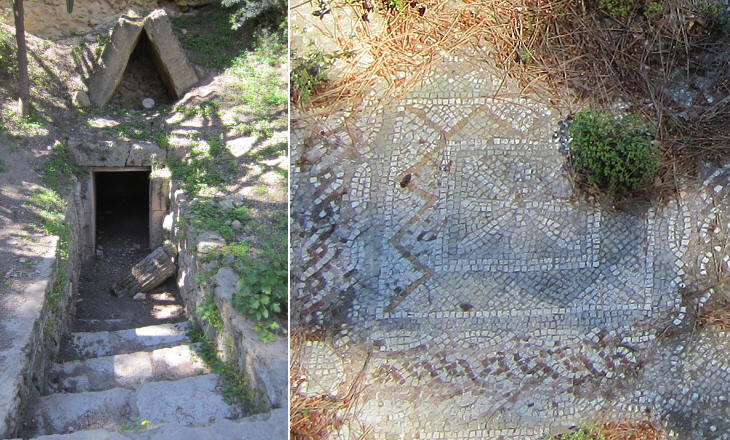  What's New! Detailed Sitemap All images © by Roberto Piperno, owner of the domain. Write to romapip@quipo.it. Text edited by Rosamie Moore. Page added in June 2012. |
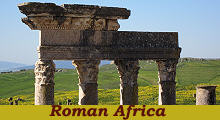 - Carthago (Carthage): Roman period - Carthago (Carthage): Roman period(detail of the theatre at Thugga) You may wish to see a page on the Punic memories of Carthage first. But now nothing remains of the great city save a few cisterns and some shapeless masses of masonry ; all that is valuable has been carried off either for the construction of the modern city of Tunis or to enrich the public buildings and museums of Europe ; and now, indeed, there can be no doubt that in very truth: "Deleta est Carthago" (Carthage is destroyed). (1895 Murray's Handbook for travellers in Algeria and Tunisia).
In 692 AD the Arabs conquered Carthage; because they feared that the Byzantines, who had a powerful fleet, could reconquer it and turn it into the base for a large expedition, they preferred to set the capital of Ifriqiya, as they called the Roman province of Africa, at Kairouan, which they had founded at a considerable distance from the coast in 670. The columns of the churches and former temples of Carthage were used to build the Great Mosque of Tunis and Carthage was abandoned, the remaining buildings being used as quarries. Archaeological excavations started in 1857, but they were mainly limited to the hill where the acropolis stood. In the meantime Carthage became an elegant neighbourhood of Tunis. Following a UNESCO initiative in 1973, the whole area of the ancient town was mapped and declared of archaeological interest, but only a few parcels of land were not already part of luxurious villas or expensive apartment blocks. As a consequence the ticket allowing entrance to ancient Carthage lists ten different sites surrounded by the modern town. The ruins of the Roman buildings on the acropolis were in part sacrificed to the unearthing of a quarter of the Punic town.
The Roman theatre was built on the slope of a hill to the north of the acropolis in the early IInd century AD. It was entirely replaced by a modern one (only a very small section was rebuilt with the original stones) which houses the International Festival of Carthage. The statues found on the site, including one of Apollo Citharede (shown in the next page), were taken to the Museum of Bardo. The only interesting thing to see is a selection of ancient columns of different colours from the four corners of the Empire which are evidence of the wealth of the city.
Tunisian authorities go from one extreme to the other when dealing with the ancient monuments of their country: they rebuilt the theatre, but they seem not to care about maintaining the odeum which stands behind it. It was built at the beginning of the IIIrd century to house musical and poetry contests. In origin odeums were rather small roofed buildings, but during the Roman Empire some very large odeums were built, such as that of Herodes Atticus at Athens.
We do not know the name of the owner of a large villa near the Odeon with a commanding view over the sea. He must have been a very wealthy man. In the IInd and IIIrd century AD, Carthage was the second largest city of the western part of the Roman Empire and its population probably reached 500,000 inhabitants. The real estate value of the land where the villa was built must have been astronomical.
The current aspect of the villa is the result of excavations carried out in the 1960s at the end of which columns and other materials found in nearby villas were utilized to complete the reconstruction of the villa. Similar to what can be observed at the theatre, the columns come from different countries.
The villa was named after the large mosaic of its peristilium which depicts many birds with other small animals, flowers and fruits. It was a common subject for mosaics, in particular for those outdoors, but it could also indicate that it was made during the Late Empire when the depiction of gods and mythical episodes was no longer in fashion.
A terrace near the peristilium houses a complex decoration which in part is made of small mosaics portraying animals and horsemen and in part is geometric with pieces of marble replacing the mosaics. The latter is evidence of spolia, i.e. the re-use of material of earlier buildings, which suggests the decoration was made or modified in the Late Empire.
Emperor Hadrian visited the province of Africa twice; during his second visit he promoted the construction of a long aqueduct from Ziqua to Carthage. When eventually the aqueduct and the large baths it supplied were completed the latter were named after Antoninus Pius, Hadrian's successor. The complex of buildings was very imposing and ipsa ruina docet (the ruins speak for themselves), a saying usually applied to Rome, fits these baths too. A column has been re-erected above the supporting structures in order to convey the idea of the height of the halls. The baths were built on the sea front and their view from the ships heading towards the harbour must have been impressive. The Romans enjoyed living by the sea. Pliny the Elder regarded sea bathing as a healthy practice although he warned about its exciting effects (you may wish to see the baths by the sea of Sabratha, another Roman town in Africa).
While we cannot admire the baths in their original splendour, we can appreciate the construction technique of the underground system of passages which allowed servants to move about the baths without disturbing the customers.
While today's modern society accepts some aspects of the Roman way of life which were despised for centuries, that of regarding latrines as a convenient place for social meetings is still not acceptable. The latrines of the Antonine Baths were very large and they were decorated with precious marbles as those built at approximately the same time at Leptis Magna, another Roman town in Africa.
The "Archaeological Park of the Antonine Baths" includes the ruins of a few buildings behind the baths. They are aligned along the customary grid of Roman towns. They generally belong to a later period than the Baths. A complex building which retains an elegant mosaic with children dancing in a background of rose petals, is believed to have been the meeting place of a "schola", a unit of Imperial guards created by Emperor Diocletian. Apparently the subject of the mosaic does not seem fit for such a meeting place, but the dropping of rose petals might have been part of the complex ceremonial introduced by Emperor Diocletian for his public appearances.
Carthage was home to a thriving Christian community since the IInd century AD, but this large basilica built with spolia is dated Vth or VIth century. It had a separate baptistery surrounded by columns.
The image used as background for this page shows a gladiator on a pottery lamp (Palaeo-Christian Museum of Carthage). Move to: Carthage - Punic memories Carthage in the Museums Introductory page Bulla Regia Mactaris Musti Neapolis Sicca Veneria Simitthus Sufetula Thuburbo Majus Thugga Thysdrus Uthina Utica Ziqua Mosaics in the Museum of Bardo  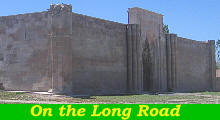 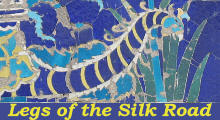 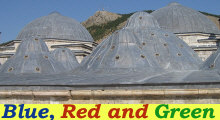
|
